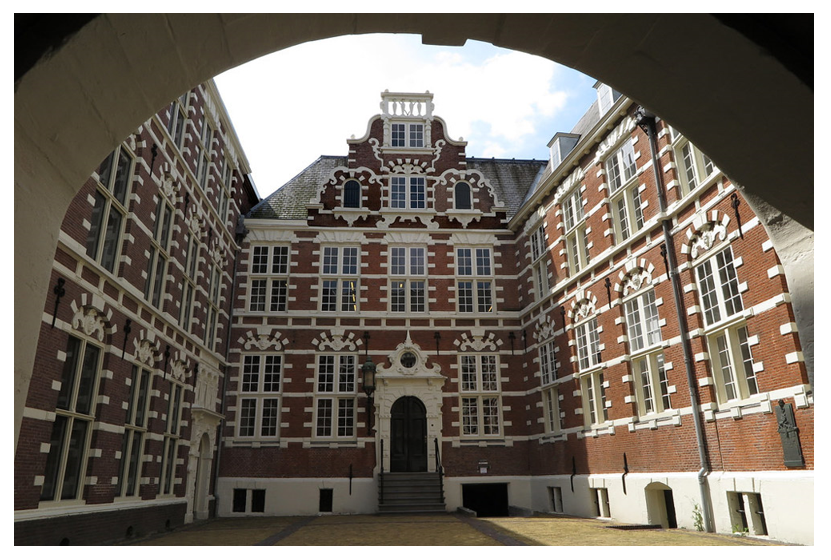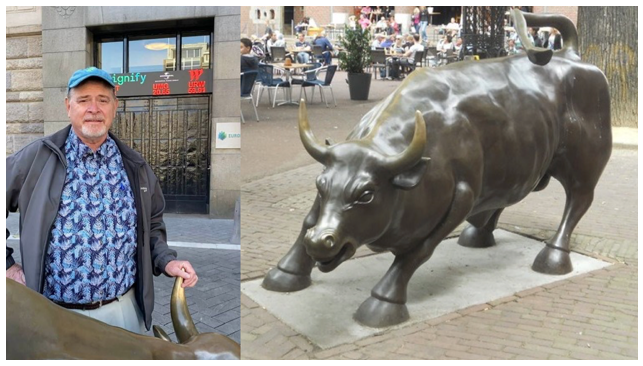I’m writing to you from Amsterdam, the capital of the Netherlands.
This is a vibrant and remarkable modern city, with amazing historical roots. When thinking of Amsterdam’s history, many think of the great art masters, like Rembrandt, Vermeer and Van Gogh.
They’re not wrong. But for me, the amazing thing about Amsterdam is how the modern stock exchange began here.
The year was 1602.
Dutch traders were already making fortunes bringing over spices from Asia to Europe. Cinnamon, nutmeg, ginger, mace, pepper!
Imagine life without pepper! Back in the day, folks in Europe would pay a fortune for it.
And maybe the Dutch traders were the first to say, “The spice must flow.” They also traded textiles, gems, you name it!
The Dutch did a lot of this trading with the Portuguese and wanted to cut out the middleman. At the same time, Holland was struggling against oppressive Spanish rule.
So how do you pay for a war? Capitalism!
The Dutch came with this great idea — the Dutch East India Company, abbreviated in their own language as VOC. Public trading of the stock began shortly afterward, and it became the first multinational corporation.

The VOC was vital to financing Holland’s fight against Spain. And its stock was so popular that the Dutch built a place where people could come and trade stock at regular hours, and not just by appointment. That’s how stock markets began.
The Dutch were financial pioneers.
They also created public bond floats, stock options and more. And all this was based on the commodities trade.
Anywhere the Dutch merchants sailed, towns sprang up, financial systems started, mines began and jobs were created. This made the Dutch very popular.
The stock market became even more popular because it allowed investors to share risk as well as return. Anyone could buy a small share of the cargoes sailing between the spice islands and Europe. Profits were shared, and losses were manageable.
This turned into the Amsterdam Stock Exchange (AMX), which is now part of Euronext. I got to visit the bull in front of the AMX during my recent visit. Pardon the wild shirt; I’m a tourist!
Yep, the Dutch have a bull in front of their stock exchange, just like the one down the street from the New York Stock Exchange (NYSE).
That bull — Charging Bull — was originally placed there overnight, in secret, in 1989, by Italian-American artist Arturo Di Modica.
This was when the world was reeling from the 1987 Black Monday stock market collapse. Di Modica wanted to give the world hope after such a financial disaster. I think it worked.
Di Modica did the same outside of the AMX in 2012 in the midst of Europe’s financial crisis. And hope it did provide. People rub the horns of the bull for luck so often, they’ve changed color.
Funny correlation, right? Well, it makes perfect sense ...
The Dutch founded New York, calling it New Amsterdam, but that changed when English settlers took over. But first, in the 1600s, Dutch settlers erected a wall on the southern tip of Manhattan Island to keep the British out.
Yeah … it didn’t work, and the wall was never used for defense. But it gave its name to a street on Manhattan: Wall Street. And that’s where colonists gathered to trade stocks and commodities. So, the Dutch helped give us Wall Street, too!
The Dutch gained a reputation for many things ... financial acumen was a big one.
But they’re also known for tolerance and welcoming refugees. Over the years, this has taken the already busy financial activity of Amsterdam and kicked it into overdrive.
Record numbers of foreign businesses open offices in the Netherlands, too. That’s why the Netherlands is ranked 69th in the world in terms of population but 17th in economic size. All this from a place that was basically reclaimed swampland several hundred years ago.
And the Dutch are also known for sharing the wealth and looking after the less fortunate. In other words, they’re capitalists, but they’re not jerks about it.
A strong social safety net allows people to start new businesses more readily. And indeed, Holland leads Europe in new business starts.
So, what can we learn from the Netherlands and its first-of-its-kind stock market?
1. Financial innovation is good. No one had imagined a stock market with regular hours and open-to-all access before the Dutch did it. It also helped them fund their major problem of the day: paying for war against Spain.
2. Tolerance and openness helps capital grow. Amsterdam is a great place to do business, and foreigners are welcome. That sure kicks an economy into higher gear.
3. Share the wealth, share the risk. The Dutch make sure to spread the wealth around. Taxes are higher than in the U.S., but services are top-notch. And the safety net gives budding entrepreneurs the confidence to start new businesses.
I had a great time in Amsterdam, and highly recommend it — for business and fun.
All the best,
Sean


